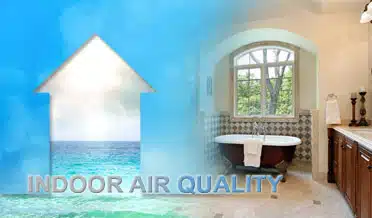Indoor Air Quality Problem Areas
Improving Indoor Air Quality in Problem Areas
American construction techniques have succeeded in building homes with a better seal against outside air, reducing drafts, and improving energy efficiency. However, the trade-off is that sealed homes tend to receive less fresh air. The indoor air constantly circulates and is several times more polluted than outdoor air. While every room will have its share of pollutants, some rooms have specific pollutant problems. Here are five rooms with the potential for poor indoor air quality and some steps to reduce pollutants.
The Attic
Most attics are unused and unconditioned space; that is the HVAC system does not circulate through most attic spaces. An attic can contribute to poor indoor air quality since it will generally be the site for insulation. Some insulation can be harmful, such as fiberglass, but all insulation can contribute to airborne pollutants when disturbed. Expect attics to receive a lot of dust and pollen as well.
- Use weather stripping to seal attic openings from the rest of the house.
The Garage
Your garage adds to indoor air pollution in two major ways:
- Driving automobiles into the garage brings in car exhaust. Carbon monoxide is one of the poisonous gases emitted, so this is an important issue.
- Unless necessary for security, wait a few seconds before lowering the garage door. This allows exhaust to ventilate to the outdoors. Do not let your car idle while in the garage.
- Consider whether your situation could benefit from garage ventilation.
- The garage also tends to be a storage area for herbicides, pesticides, paints, and cleaning products.
- Store hazardous material safely, in secured containers and in a locked cabinet if possible.
- Make sure the garage door is adequately sealed with weather stripping to prevent fumes and odors from entering the house.
The Kitchen
Activities performed primarily in the kitchen can contribute to poor indoor air quality.
- Cooking food with natural gas or propane will produce carbon monoxide and other toxins that need to be vented to the outdoors.
- Stored food can also be a source of mold and bacterial growth.
- The cleaning supplies associated with cleaning in the kitchen can also release hazardous gases into the rest of the house.
- Use the stovetop vent on low power when cooking, whether you use gas or not. This will remove both toxins and odors.
- Make a schedule to dispose of stored food before it spoils.
- Use nontoxic household cleaners, such as vinegar or baking soda.
Bathrooms
The most humid room in your house will be your bathroom(s). Hot water from showers and baths creates steam which condenses on most surfaces. In addition, standing water is evaporating almost constantly. Moisture on surfaces can lead to the growth of mold and mildew.
- Use the exhaust fan during baths and showers to remove the steam. Make sure to clean the fan grill to remove the wet dust that develops.
- When weather permits, open a bathroom window during showers.
- Wipe down surfaces often with a natural cleaner such as vinegar. Vinegar will inhibit the growth of mold and mildew.
Bedrooms
Many people will spend at least 1/3 of their day in the bedroom, so improving air quality in the bedrooms is a great advantage. If moisture in the bathroom is the issue, there are some simple solutions. If dust and dander are the issues in the bedroom, the largest percentage of these particles are generated by humans and pets. Here are several ways to improve air quality in the bedroom.
- Open windows whenever possible to add fresh air.
- The carbon dioxide that is released while sleeping is significant, so moving the air is a great benefit. Learn to use ceiling fans to improve room ventilation.
- Clean regularly. Dust. Vacuum. Change and launder bedding regularly.
Have Questions About How to Improve Your Indoor Air Quality?
Let us know how we can help with improving your indoor air quality, call AllCool AC & Heating at 281-238-9292 or contact us via email.
